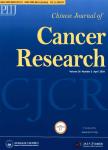Proton therapy for hepatocellular carcinoma
Proton therapy for hepatocellular carcinoma作者机构:Department of Radiation MedicineLoma Linda University Medical Center
出 版 物:《Chinese Journal of Cancer Research》 (中国癌症研究(英文版))
年 卷 期:2012年第24卷第4期
页 面:361-367页
核心收录:
学科分类:1002[医学-临床医学] 100214[医学-肿瘤学] 10[医学]
主 题:Proton radiotherapy hepatocellular carcinoma (HCC)
摘 要:Proton radiotherapy has seen an increasing role in the treatment of hepatocellular carcinoma (HCC). Historically, external beam radiotherapy has played a very limited role in HCC due to a high incidence of toxicity to surrounding normal structures. The ability to deliver a high dose of radiation to the tumor is a key factor in improving outcomes in HCC. Advances in photon radiotherapy have improved dose conformity and allowed dose escalation to the tumor. However, despite these advances there is still a large volume of normal liver that receives a considerable radiation dose during treatment. Proton beams do not have an exit dose along the beam path once they enter the body. The inherent physical attributes of proton radiotherapy offer a way to maximize tumor control via dose escalation while avoiding excessive radiation to the remaining liver, thus increasing biological effectiveness. In this review we discuss the physical attributes and rationale for proton radiotherapy in HCC. We also review recent literature regarding clinical outcomes of using proton radiotherapy for the treatment of I-ICC.



